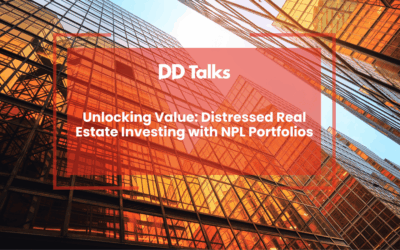Non-performing loans (NPLs) account for 10% of Armenian commercial banks’ portfolios, as highlighted by Mikhail Zadornov, Chairman of VTB24. Despite this figure being aligned with regional trends, challenges such as economic shocks and currency fluctuations continue to drive debt restructuring efforts in Armenia. VTB Bank (Armenia) plays a significant role in addressing these challenges, maintaining the largest branch network in the country while managing substantial assets and liabilities.
NPL Overview in Armenia
Non-performing loans (NPLs) account for 10% of the total portfolios of Armenian commercial banks, according to Mikhail Zadornov, Chairman of the Board of VTB24. Speaking at a press conference in Yerevan, Zadornov highlighted that this figure reflects official statistics but suggested that the actual proportion might be slightly higher.
Regional Comparison: Russia and Armenia
“For comparison, the rate of non-performing loans in Russia hovers around 10-11%, with no significant difference between corporate and retail lending portfolios,” Zadornov noted. He emphasized that restructuring and debt collection remain key priorities for banks operating in Armenia, Russia, and other markets worldwide.
Debt Restructuring and Economic Challenges
Yuri Gusev, CEO of VTB Bank (Armenia), echoed these observations, stating that the NPL rate is consistent across the Armenian banking sector despite some institutions facing greater challenges than others.
“As banks, we focus on restructuring client debts—a normal practice given the economic shocks affecting the foreign exchange market. Armenian exporters, for instance, have encountered significant challenges due to shifts in the national currency exchange rate, particularly in relation to the Russian ruble. These circumstances make debt restructuring a necessity,” Gusev explained.
VTB Bank (Armenia) Profile
VTB Bank (Armenia), which became a wholly owned subsidiary of Russia’s VTB Group in 2004, is a prominent player in the Armenian financial market. Operating 67 branches across the country, the bank has the largest branch network in Armenia.
Financial Performance (First Half of 2016)
As of the first half of 2016, the bank reported total assets of 278.3 billion drams, liabilities of 237.1 billion drams, and a capital base of 41.2 billion drams. The bank’s loan portfolio stood at 168 billion drams, while it recorded losses amounting to 1.2487 billion drams.
($1 = 474.57 drams)
FAQs
- What is the percentage of non-performing loans (NPLs) in Armenian banks?
- NPLs account for 10% of the total portfolios of Armenian commercial banks, though this figure may be slightly underestimated.
- How does the NPL rate in Armenia compare to Russia?
- The NPL rate in Russia is similar, hovering around 10-11%, with no significant differences between corporate and retail lending portfolios.
- What challenges are Armenian exporters facing?
- Armenian exporters are facing challenges due to fluctuations in the national currency exchange rate, particularly in relation to the Russian ruble, which has necessitated debt restructuring efforts.
- What is the profile of VTB Bank (Armenia)?
- VTB Bank (Armenia) is a wholly owned subsidiary of Russia’s VTB Group, operating 67 branches across the country, making it the largest branch network in Armenia.
- What were VTB Bank (Armenia)’s financial highlights for the first half of 2016?
- As of the first half of 2016, the bank reported total assets of 278.3 billion drams, liabilities of 237.1 billion drams, and a capital base of 41.2 billion drams. It also reported losses amounting to 1.2487 billion drams.




0 Comments